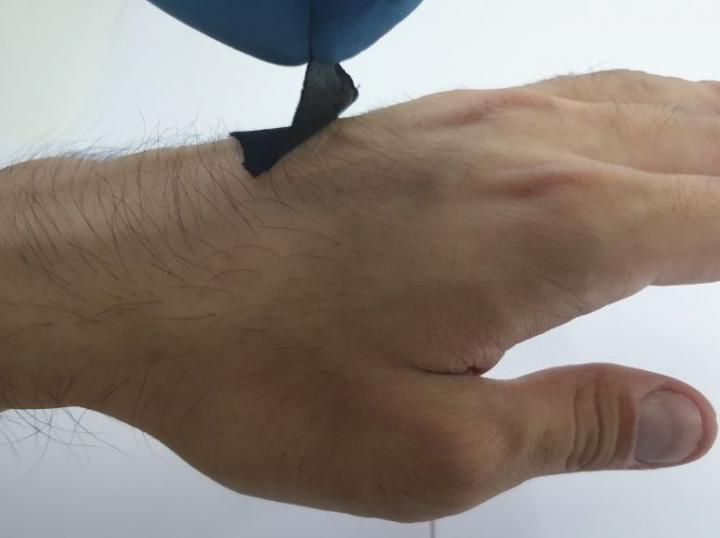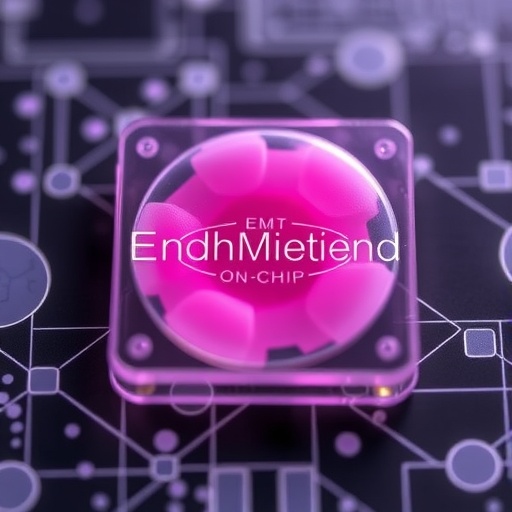
Credit: Adapted from ACS Appl. Mater. Interfaces 2019, 11, 16951?16957
Wearable electronics that adhere to skin are an emerging trend in health sensor technology for their ability to monitor a variety of human activities, from heart rate to step count. But finding the best way to stick a device to the body has been a challenge. Now, a team of researchers reports the development of a graphene-based adhesive biosensor inspired by octopus “suckers.” They report their findings in ACS Applied Materials & Interfaces.
For a wearable sensor to be truly effective, it must be flexible and adhere fully to both wet and dry skin but still remain comfortable for the user. Thus, the choice of substrate, the material that the sensing compounds rest upon, is crucial. Woven yarn is a popular substrate, but it sometimes doesn’t fully contact the skin, especially if that skin is hairy. Typical yarns and threads are also vulnerable to wet environments. Adhesives can lose their grip underwater, and in dry environments they can be so sticky that they can be painful when peeled off. To overcome these challenges, Changhyun Pang, Changsoon Choi and colleagues worked to develop a low-cost, graphene-based sensor with a yarn-like substrate that uses octopus-like suckers to adhere to skin.
The researchers coated an elastic polyurethane and polyester fabric with graphene oxide and soaked in L-ascorbic acid to aid in conductivity while still retaining its strength and stretch. From there, they added a coating of a graphene and poly(dimethylsiloxane) (PDMS) film to form a conductive path from the fabric to the skin. Finally, they etched tiny, octopus-like patterns on the film. The sensor could detect a wide range of pressures and motions in both wet and dry environments. The device also could monitor an array of human activities, including electrocardiogram signals, pulse and speech patterns, demonstrating its potential use in medical applications, the researchers say.
###
The authors acknowledge funding from the National Research Foundation of Korea, the Korean Ministry of Education and the Korean Ministry of Science.
The abstract that accompanies this study is available here.
The American Chemical Society, the world’s largest scientific society, is a not-for-profit organization chartered by the U.S. Congress. ACS is a global leader in providing access to chemistry-related information and research through its multiple databases, peer-reviewed journals and scientific conferences. ACS does not conduct research, but publishes and publicizes peer-reviewed scientific studies. Its main offices are in Washington, D.C., and Columbus, Ohio.
To automatically receive news releases from the American Chemical Society, contact [email protected].
Follow us on Twitter | Facebook
Media Contact
Katie Cottingham
[email protected]
Related Journal Article
http://dx.




